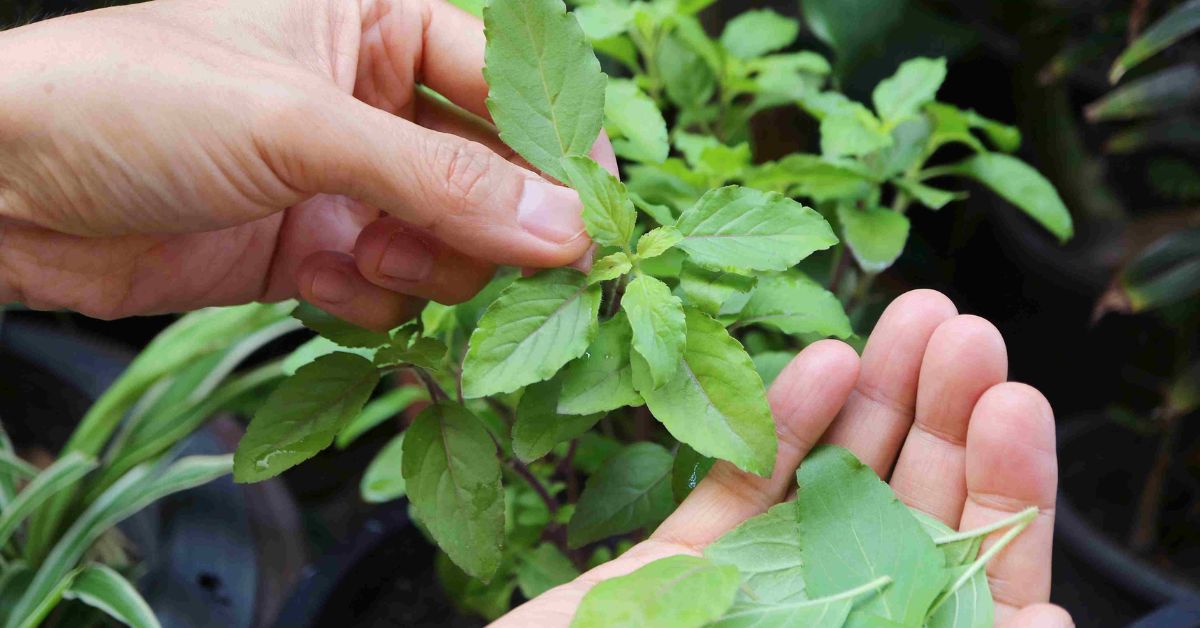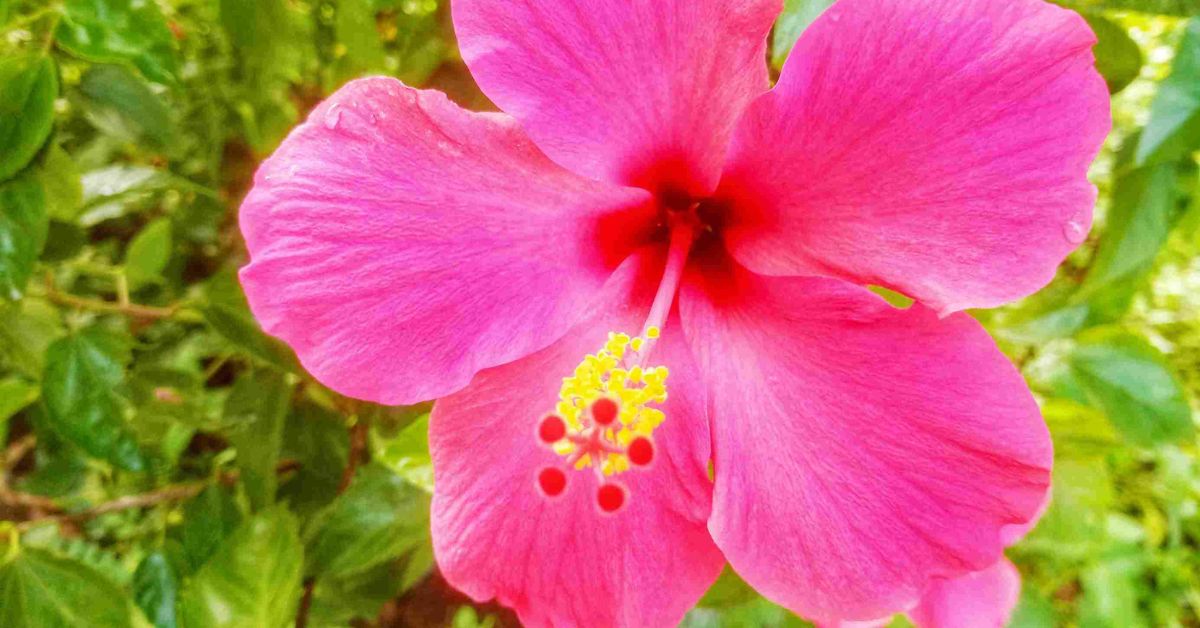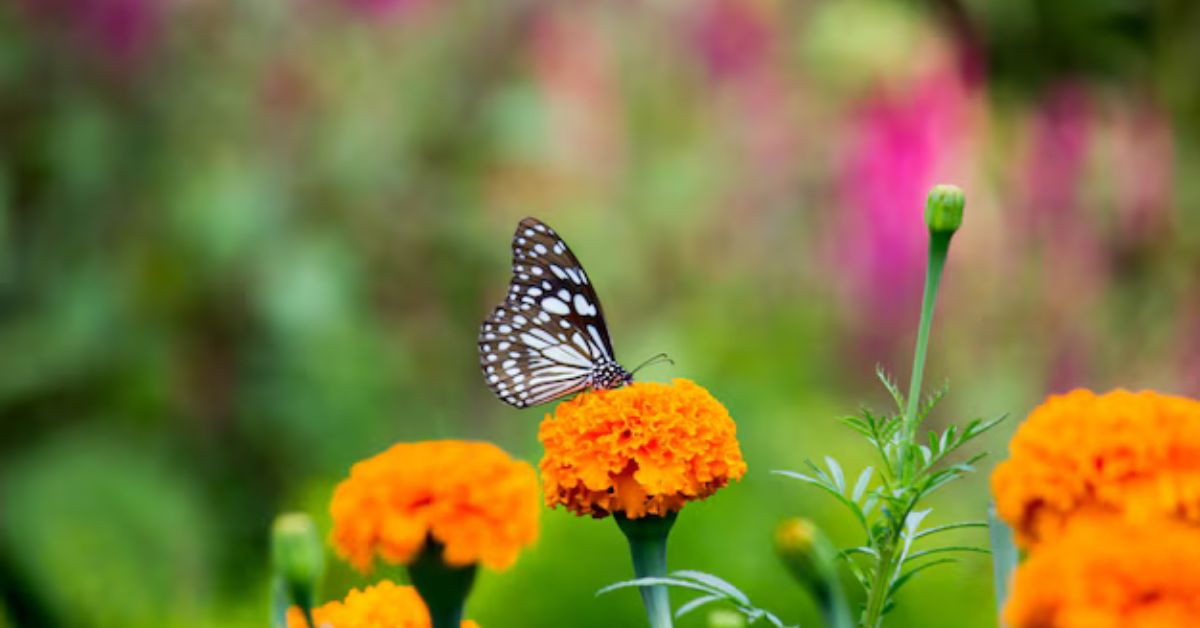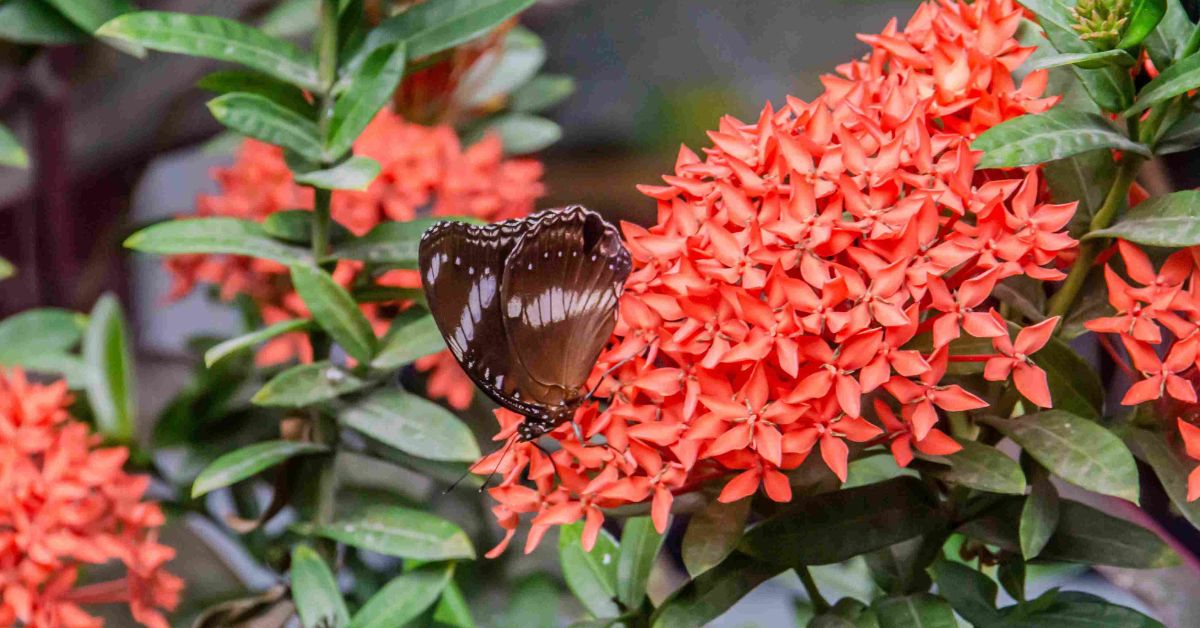Feature image courtesy: Shutterstock
On a lazy afternoon, if you’ve ever watched a butterfly hover over a flower, you know the joy it brings. The way it flits, pauses, and then drinks deep from the nectar feels like a tiny performance by nature, staged just for you. The good news? You don’t need to trek to a faraway meadow to enjoy this view. With the right plants, your balcony or garden can become a butterfly hotspot — buzzing with life, colour, and wings that dance in the sunlight.
Here are five butterfly-friendly plants you can grow at home, each with its own charm and a few simple tricks to keep them thriving.
1. Tulsi (Holy Basil)
The tiny purple and white tulsi flowers may look modest, but to butterflies they are little nectar havens. Their gentle scent and steady blooms make tulsi a constant favourite for fluttering visitors.

Getting started: Tulsi thrives in well-drained soil and loves plenty of sunlight. A sunny windowsill or balcony is perfect for it. Water it moderately, ensuring the soil doesn’t stay soggy.
When to grow: The best time to start is in spring or early summer, but tulsi grows well all year round in most Indian climates.
Special tip: Pinch off the flower tips regularly to encourage bushier growth and more leaves. This not only benefits your kitchen but also keeps butterflies returning for the nectar.
Here’s how to grow tulsi at home.
2. Hibiscus
Bright, bold, and open like a welcoming hand, hibiscus flowers are irresistible. Their wide petals give butterflies the perfect landing pad, and the sweet nectar hidden deep inside keeps them coming back.

Getting started: Hibiscus is happiest in large pots or open ground with plenty of sunlight. It needs regular watering, but make sure water doesn’t stagnate around the roots.
When to grow: Best planted at the onset of summer, though it can thrive throughout the year in warm regions.
Special tip: Hibiscus attracts large, colourful butterflies like the Common Mormon. Feed the sapling with organic compost every few weeks to keep the flowers blooming generously.
Here’s how to grow hibiscus at home.
3. Marigold
With their cheerful yellows and oranges, marigolds are like glowing lamps in the garden. Butterflies can’t resist their colour and hop happily from bloom to bloom in search of nectar.

Getting started: This cheerful plant does well in pots or garden beds. It needs sandy, well-drained soil and six hours of sunlight a day. Water lightly but regularly.
When to grow: Sow marigold seeds at the start of summer or winter for best blooms.
Special tip: Marigolds are hardy and pest-resistant, making them one of the easiest choices for first-time gardeners. Their bright orange and yellow blossoms are irresistible to butterflies.
Here’s how to grow marigolds.
4. Ixora (Rangan)
Ixora flowers bloom in tight bunches of fiery red and orange stars. Butterflies love the crowd of tiny blooms, where they can sip nectar side by side, turning the plant into a busy café.

Getting started: Ixora loves warmth and humidity, making it perfect for Indian homes. Plant it in a sunny spot with moist, slightly acidic soil. Water often, but avoid overwatering.
When to grow: Monsoon and early summer are the best times to plant ixora.
Special tip: Butterflies adore its dense clusters of tiny red and orange flowers. For best results, prune lightly after each flowering season to encourage more blooms.
Here’s how to grow ixora.
5. Milkweed
Milkweed is more than just food; it’s home. Its pretty pink and orange flowers offer nectar, while its leaves feed caterpillars.

Getting started: A hardy plant that can tolerate dry soil and harsh sunlight. It’s best grown in open spaces or large pots.
When to grow: Sow during spring for best results, though it self-seeds and grows easily year after year.
Special tip: Milkweed is the host plant for many butterfly species. If you’re lucky, you might even see caterpillars munching away, which is a sign your butterfly haven is working.
Here’s how to grow milkweed.
When you add these plants to your garden, you’re not just growing flowers — you’re inviting butterflies to stay a while. Soon, your mornings may be filled with flashes of colour, soft wingbeats, and the quiet joy of watching life unfold in your own backyard. In time, your little patch of green becomes more than a garden — it becomes a sanctuary alive with stories written on wings.

No comments:
Post a Comment